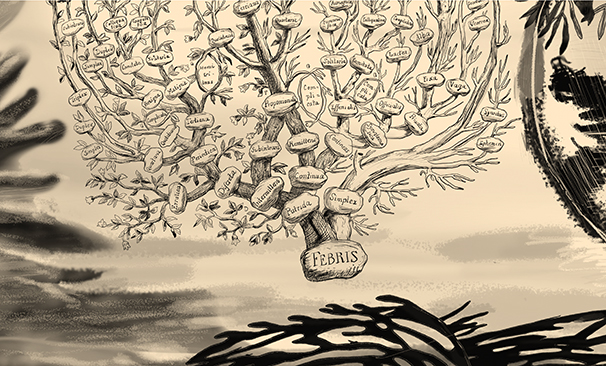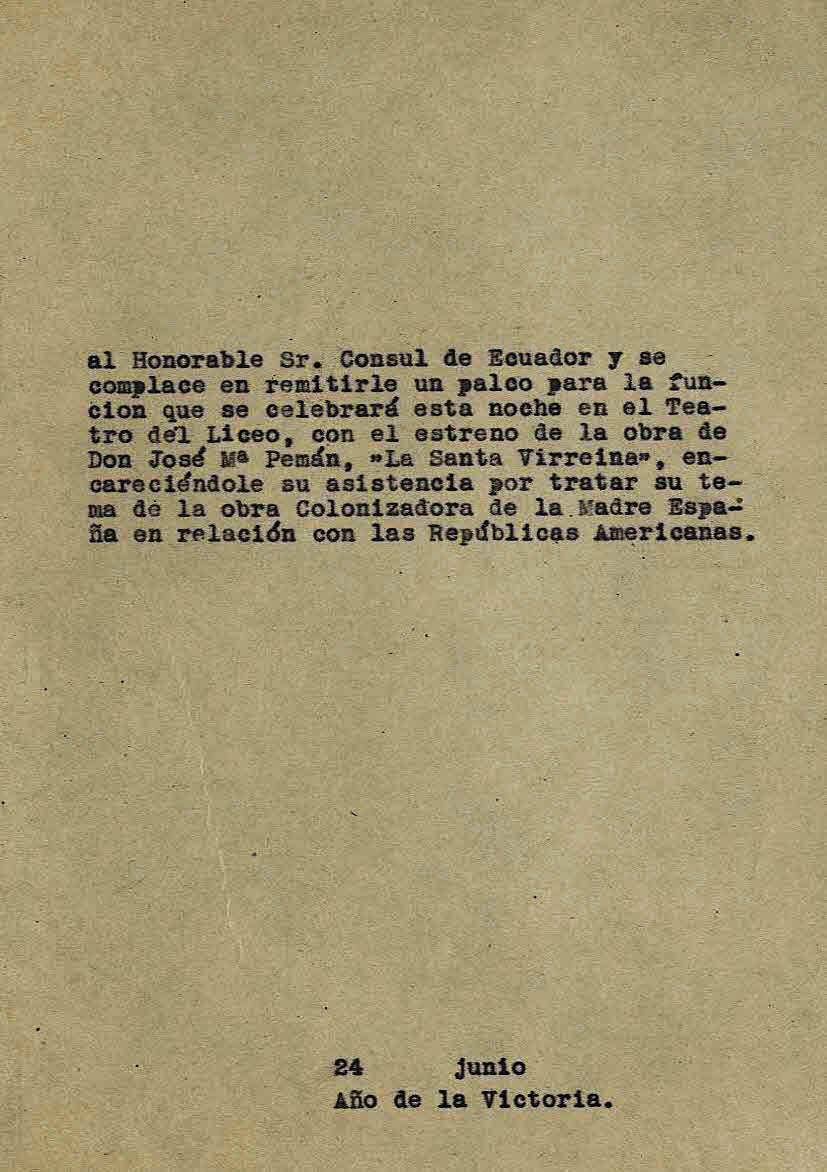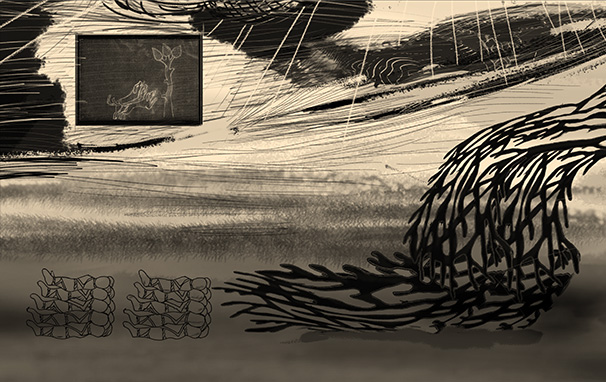What are you looking for?
You might be looking for...
Reconstrucció: La Santa Virreina (Escena III)
Verónica Lahitte + Antonio Gagliano

Obra
The sun is a star, or a god. In José María Pemán's 1939 play La Santa Virreina, which recounts the European legend of the "discovery" of the cinchona plant to cure malarial fevers in the early 17th century, it is the sun that is to blame for the fevers suffered by the Countess of the Viceroyalty of Peru. "Vuestro Sol no ha de humillar a la Virreina de España", says the Countess in a fragment of the play. La Santa Virreina is part of what later came to be called falangist theatre, a series of theatrical proposals produced between 1937 and 1941 in which the guidelines were clear: the history of Spain was seen and constructed as a concatenation of great events obeying the falangist ideals of empire and the recovery of a glorious past. Reconstruction: La Santa Virreina (Scene III) remakes the monumental scenography of the third scene of the work destroyed by flames in 1994, when the Gran Teatre del Liceu, the stage where the piece was premiered in 1939, was devastated by fire. In this new version, however, CHAOS has taken over the space. What was once a character representing a world has been transformed once again on stage. The resurgence from the ashes of the fever tree brings with it erased oral literatures, ramifications close to delirium and felines that show the cure in the chewed bark. The secret of the flora of Ecuador then appears as a key character, with its own designs, capable of destabilising and challenging the dangerous consequences of a foundational myth.

Aknowledgements: Javier Andrés Rodríguez, María Auxiliadora Balladares, Ingrid Blanco, Lorena Cabral, Bertha Díaz, Paula Miranda, Amaranta Pico, Linda Valdés, Arxiu Històric de la Diputació de Barcelona, Archivo Municipal de Barcelona, Beques Premis Barcelona 2020, Fundació Gran Teatre del Liceu
Verónica Lahitte (Buenos Aires, 1980) Visual artist. Museum Studies (PEI, Museu d'Art Contemporani de Barcelona) and MA in Literary Theory and Comparative Literature (Universidad Autónoma de Barcelona). Her work investigates forms of writing, enunciation and disappropriation, establishing specific logics designed for each context. She has presented her work in museums and art centres such as Palais de Glace (Buenos Aires), Kunstuniversität (Linz), Württ Kunstverein Stuttgart, Det Kongelige Danske Kunstakademi (Copenhagen), Museu d'Art Contemporani de Barcelona and Arts Santa Mónica (Barcelona), among others. Between 2015 and 2017 she was a research resident and lecturer in the department of Critical Theory and Experimental Practices at La Universidad de las Artes, Guayaquil. She was also selected for the Baden Württemberg Catalunya residency (Stuttgart, 2017) and received a creation grant from the Fondo Nacional de las Artes (Buenos Aires, 2017). She has published the book Wagschale der Zeit und Ewigkeit (V___erlag für Handbücher, 2019) and was part of the European project The New Dictionary of Old Ideas (MeetFactory-Prague, Trafostacja-Szczecin, CentroCentro-Madrid and Silk Museum-Tbilisi, 2019-2020). Since 2019, she has been a contributor to Son(í)a Radio Web MACBA.
Antonio Gagliano (Córdoba, Argentina, 1982) Visual artist. Graduated in Fine Arts from the National University of Córdoba, Argentina, he obtained a master's degree in Critical Theory and Museum Studies from the PEI, Museu d'Art Contemporani de Barcelona.
Her projects interweave artistic practices and research, using drawing and writing to explore the multiple ways in which knowledge emerges, is organised and disseminated. He has participated in exhibitions at Württ Kunstverein Stuttgart, Havana Biennial, Casa Encendida, MACBA, Fundació Joan Miró and Fundació Antoni Tàpies, among others. He has won awards such as Generación 2018 (Fundación Montemadrid, 2017) and ArteBA-Petrobras, edition X (Buenos Aires, 2013). He was co-curator of the annual cycle La lección excéntrica (EspaiDOS, 2011-12) and of the research area of Siga los rastros como si fuera miope, an exhibition celebrating the 10th anniversary of Sala d'Art Jove (Arts Santa Mònica, 2016). His publications include El espíritu del siglo XX (Album, 2014), Buno (Fundació Joan Miró, 2014) and Estado de la técnica (V___erlag für Handbücher, 2018). Since 2014, she has been a member of the editorial team of Son(í)a Radio Web MACBA. He currently coordinates the Research and Knowledge Transfer Area of Hangar.
